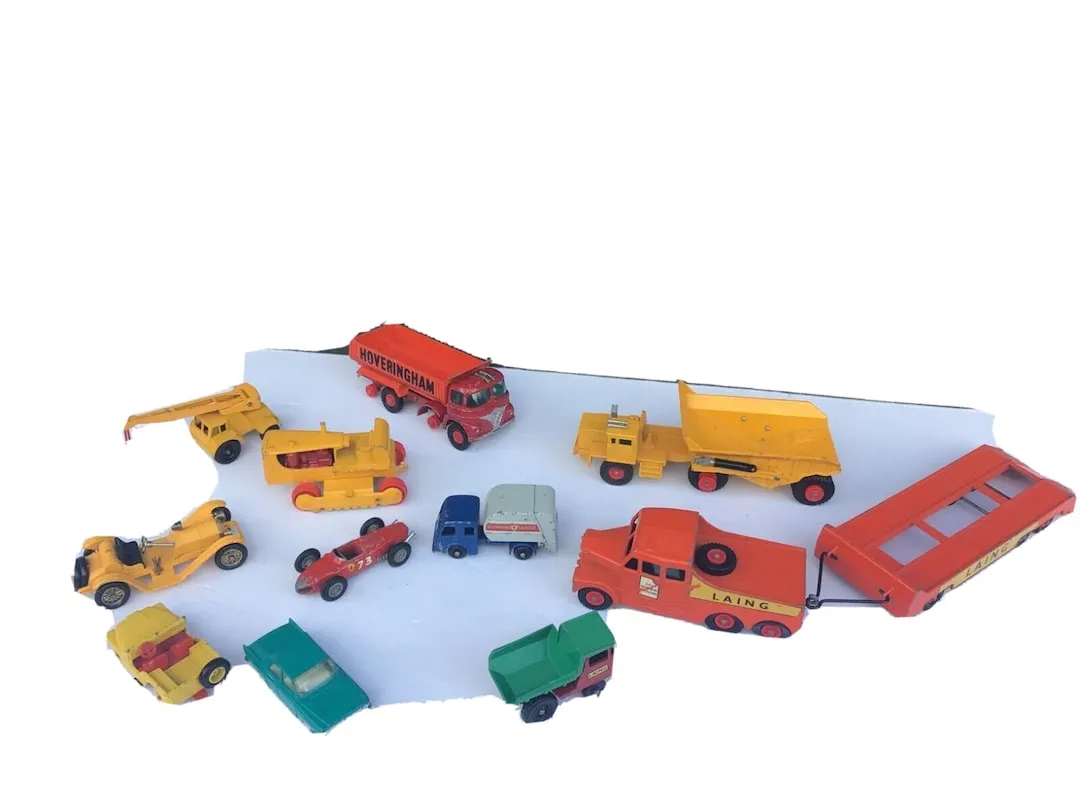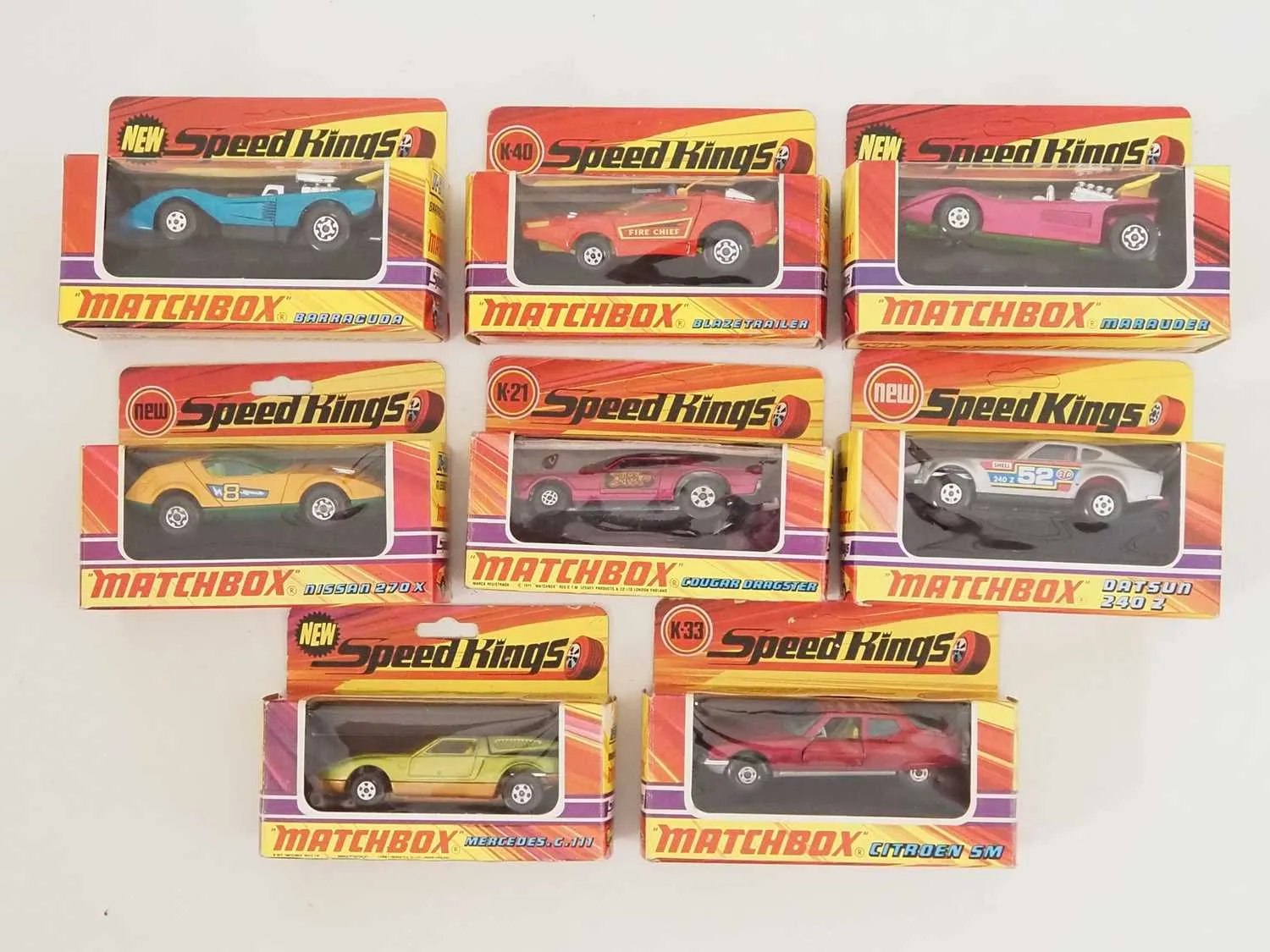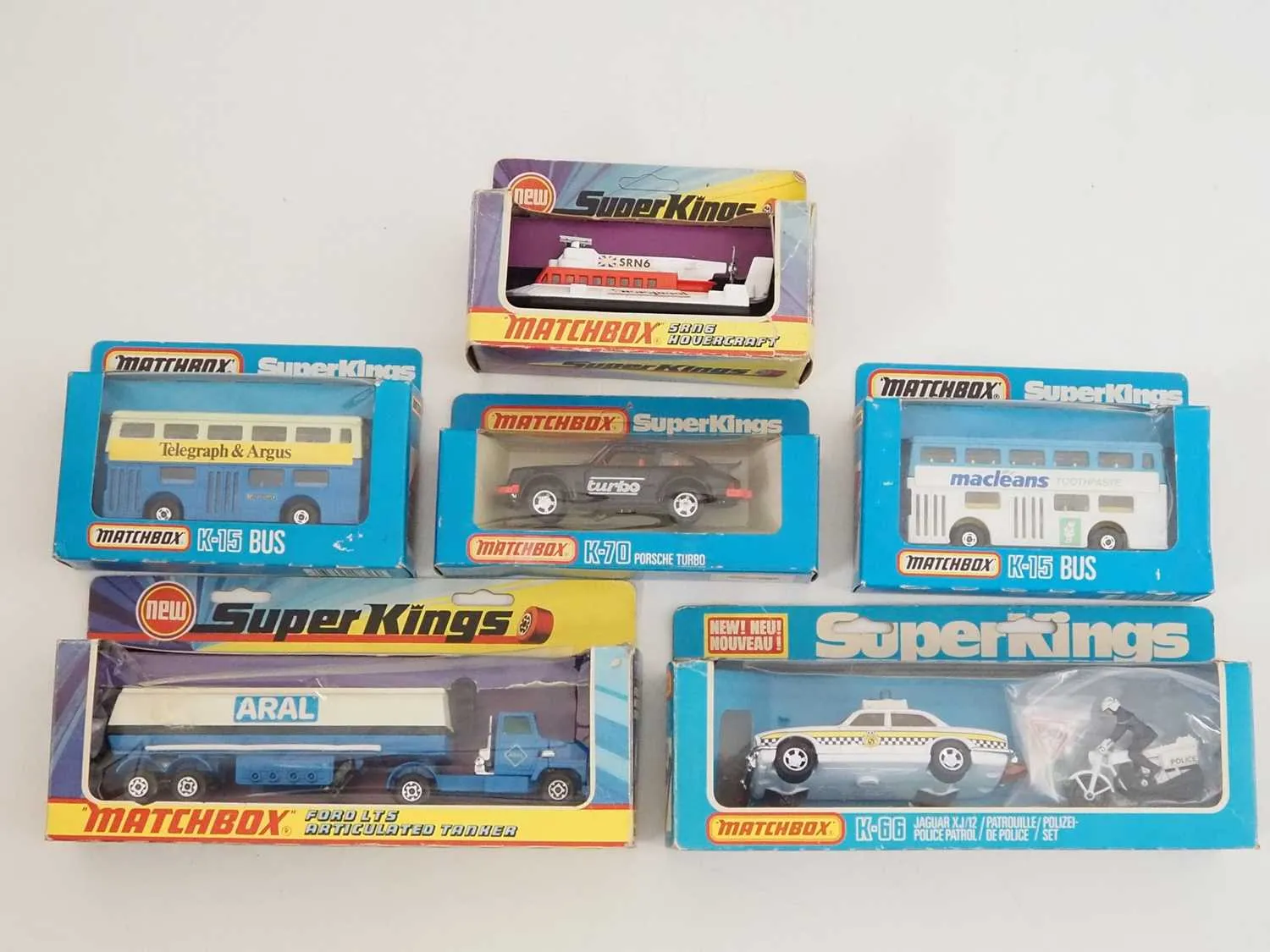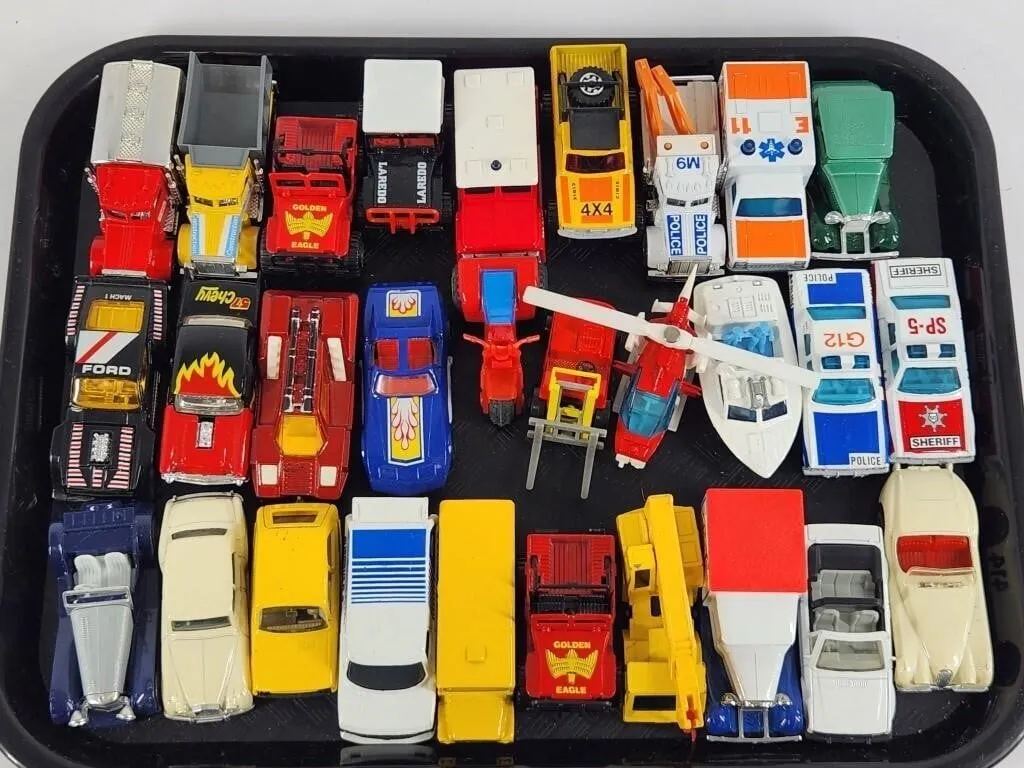Matchbox cars have captivated collectors and enthusiasts for generations. These miniature diecast vehicles, born from a simple idea, have grown into a global phenomenon, representing not just toys, but also a significant piece of automotive and cultural history. The charm of these small cars lies in their intricate detail, historical accuracy, and the nostalgia they evoke. For those looking to delve into the world of vintage Matchbox cars, the journey can be incredibly rewarding. From the early models produced by Lesney Products to the rarer, more valuable editions, there is much to discover and appreciate. Whether you are a seasoned collector or a newcomer to the hobby, this guide will provide valuable insights into the top 7 vintage Matchbox collectibles, helping you navigate this exciting and fascinating collecting landscape.
Matchbox Cars Top 7 Vintage Collectibles
Early Matchbox History & Significance
The Origin of Matchbox Cars

The story of Matchbox cars began in post-World War II England, born from a need for affordable toys. The original concept was simple create small, diecast vehicles that could fit inside a matchbox, hence the name. This clever idea not only made the toys accessible but also created a unique selling point that resonated with children and parents alike. These early models were designed to be portable, durable, and reflective of the real-world vehicles of the time, instantly capturing the imagination of young enthusiasts. The initial focus was on creating a range of different vehicles, including cars, trucks, and construction equipment, quickly expanding the appeal of the brand and building a loyal following.
Lesney Products and the Early Days
Lesney Products, the company behind the Matchbox brand, was founded by Leslie Smith and Rodney Smith, who began producing diecast toys in 1947. Their innovation and attention to detail set them apart, and the quality of their products quickly gained recognition. The early Matchbox cars were characterized by their simple designs, but they were meticulously crafted. Lesney’s production methods and commitment to quality ensured that their toys were not only appealing but also durable. These early models, which are highly sought after by collectors today, laid the foundation for the brand’s enduring success and solidified its place in toy history. The dedication of Lesney Products to quality and innovation made them a leading force in the diecast toy market.
Why Matchbox Cars Became Popular
Matchbox cars quickly gained popularity for several reasons. Firstly, their affordability made them accessible to a wide range of children. Secondly, the detailed designs and accurate representations of real-world vehicles appealed to young enthusiasts. The small size of the cars also added to their appeal, as they could be easily carried around and played with anywhere. Moreover, the introduction of new models and variations kept the series fresh and exciting, encouraging repeat purchases and building a strong sense of community among collectors. The combination of affordability, quality, variety, and collectibility ensured that Matchbox cars became a global sensation, influencing the toy industry for decades.
Collectible Matchbox Models

The 7 Most Valuable Matchbox Cars
Identifying the most valuable Matchbox cars requires a keen eye and understanding of rarity, condition, and historical significance. While the value of a specific car can fluctuate, certain models consistently command high prices among collectors. These prized collectibles often include limited-edition releases, rare color variations, and models that were only produced in small quantities. The demand for these cars is fueled by their scarcity and the passion of collectors eager to complete their sets or own a piece of Matchbox history. The search for these treasures can be an exciting journey, leading collectors to flea markets, antique shops, and online auctions. The value of a Matchbox car can be significant, depending on the model and condition.
1960s Models & Their Value
The 1960s were a golden era for Matchbox cars, with many of the most iconic and valuable models produced during this time. Cars from this period are highly sought after due to their classic designs and the historical significance. These models often feature unique details, such as specific paint colors, wheel types, and interior designs, which differentiate them from later productions. The value of these 1960s models can range from hundreds to thousands of dollars, depending on their rarity and condition. Some of the most valuable examples include early versions of popular models, rare variations, and those in excellent condition. Collecting 1960s Matchbox cars is a rewarding endeavor for enthusiasts of vintage toys.
Rare Models and Limited Editions

Rare models and limited editions are at the pinnacle of Matchbox collecting. These cars were often produced in small quantities, as promotional items, or for special events, making them incredibly valuable. Collectors are always on the hunt for these unique pieces, as they represent a significant investment. The rarity of these models is due to several factors, including low production numbers, unique paint schemes, and special features. Limited editions, in particular, often feature exclusive designs or color variations not found in standard releases. These rare finds are highly prized and can command significant prices in the collectors market, reflecting their exclusivity and the high demand.
Factors Influencing Matchbox Car Values
Condition and Its Impact
The condition of a Matchbox car plays a crucial role in determining its value. Collectors highly value cars in mint condition, as they represent the best examples of their kind. Factors such as paint quality, the absence of scratches or damage, and the presence of original packaging can significantly affect a car’s price. Even minor imperfections, such as paint chips or worn tires, can impact the overall value. Preserving the original condition of a Matchbox car is critical for maximizing its value. When assessing the condition, collectors use different grading systems to accurately evaluate a car’s state. This systematic approach helps establish a fair market price and provides valuable insights into the car’s history.
Rarity and Demand

Rarity and demand are the cornerstones of value in the Matchbox collecting world. The fewer examples of a particular model, the higher its potential value. This scarcity can arise from low production numbers, production errors, or limited distribution. Demand is influenced by collector interest, the model’s historical significance, and its design. Certain models, such as those with unique features or associated with popular brands, are in high demand and thus more valuable. Collectors often seek specific models to complete their collections, further driving up demand. Understanding the interplay of rarity and demand is crucial for anyone looking to invest in or collect vintage Matchbox cars.
How to Identify Vintage Matchbox Cars
Identifying Marks and Codes
Identifying vintage Matchbox cars requires understanding the markings and codes used by Lesney. These identifiers provide valuable clues about a car’s age, model, and production run. Identifying marks include the name “Matchbox”, the model number, and the country of origin. Many vintage Matchbox cars also feature base codes that identify the year of production. These codes, often a combination of letters and numbers, can help determine a car’s production date. Understanding the meaning of these markings and codes is crucial for accurate identification. Numerous online resources and collector guides are available to help enthusiasts decipher these details and determine the authenticity and value of Matchbox cars.
The Base of the Car

The base of a Matchbox car is a treasure trove of information for collectors. The base often bears the model name, the Lesney Products logo, and the production details. The base is typically made from metal and features the axles, wheels, and sometimes the interior of the vehicle. Early models used simpler base designs, while later versions incorporated more detailed features. Examining the base can reveal important clues about a car’s age, including production codes that pinpoint the year of manufacture. The condition of the base, including the presence of rust or damage, can also impact a car’s value. Collectors often use magnifying glasses to carefully examine the details on the base, ensuring accuracy in identifying and valuing their cars.
Wheels and Tires
The wheels and tires on a Matchbox car are important identifying features. The type of wheels and tires used on a car can indicate when it was manufactured. Early Matchbox cars often had metal wheels. Over time, Lesney Products experimented with different wheel designs and materials, including plastic and rubber tires. Different wheel and tire combinations can help narrow down a car’s production period and value. Variations in wheel designs are particularly useful for identifying rare models and limited editions. The condition of the wheels and tires also affects the overall condition of the car and, therefore, its value. Collectors frequently check the wheels for any signs of wear or damage when evaluating a Matchbox car.
Body Details and Paint
The body details and paint of a Matchbox car provide significant clues about its authenticity and value. The paint quality, color, and any variations can differentiate a car from others. Lesney often used enamel paints. Variations in paint application or slight color differences can point to rare or error models. Examining the body for details such as the type of headlights, grille, and other design elements can help confirm a car’s model and year. The absence of paint, paint imperfections, or the presence of unusual colors can indicate a rare find. Collectors pay close attention to the body details, as they help to accurately identify and value each Matchbox car. Comparing a car’s paint and body details to reference materials is a common practice in the collecting community.
Comparing to Reference Materials

Comparing a Matchbox car to reference materials is a crucial step in the identification process. Collector guides, catalogs, and online resources offer valuable information about the various models, their features, and production details. These materials usually include detailed photographs, descriptions, and manufacturing variations. By comparing a car to these resources, collectors can verify its model, identify any unusual features, and determine its authenticity. This comparative process helps in assessing a car’s rarity, condition, and value. Reliable reference materials are indispensable tools for every Matchbox car collector, ensuring accurate identification and informed decision-making in the hobby.
Where to Find and Collect Matchbox Cars
Flea Markets and Antique Shops
Flea markets and antique shops are excellent hunting grounds for vintage Matchbox cars. These venues often offer a diverse selection of collectibles at competitive prices. Flea markets can uncover hidden gems, sometimes from sellers unfamiliar with the value of their items. Antique shops frequently have curated collections of vintage toys and often provide valuable expertise. Collectors can find early models, rare variations, and other valuable pieces at these locations. Negotiating prices is often possible. Regular visits and a willingness to explore different locations are key to finding rare Matchbox cars. Collectors should inspect the cars carefully for condition and authenticity, as well as enjoy the thrill of the hunt.
Online Auctions and Marketplaces
Online auctions and marketplaces are major sources for vintage Matchbox cars. Platforms such as eBay, Etsy, and dedicated collector websites connect buyers and sellers from around the world. The online marketplace provides a vast selection, including rare and hard-to-find models. Collectors can compare prices, view detailed photos, and read seller descriptions before bidding or making a purchase. Online auctions offer the opportunity to acquire valuable cars at competitive prices. It is essential to research sellers, review their feedback, and carefully examine the car’s condition before making a purchase. Online auctions and marketplaces provide a convenient and global platform for Matchbox car collectors to expand their collections.
Matchbox Collecting Communities
Joining Matchbox collecting communities is beneficial for enthusiasts. These communities offer a platform for exchanging knowledge, trading cars, and sharing information. Online forums, social media groups, and local collector clubs facilitate discussions and the sharing of expertise on vintage Matchbox cars. Members can learn about model identification, valuations, and the history of the brand. These communities also host events, such as meet-ups and swap meets, which allow collectors to connect in person. Engaging with other collectors provides a valuable resource for expanding knowledge, discovering rare models, and fostering a shared passion for the hobby. These communities are an integral part of the Matchbox collecting experience.
Caring for Your Matchbox Cars
Storage and Display Tips
Proper storage and display are essential for preserving vintage Matchbox cars. Storing cars in a controlled environment protects them from dust, moisture, and extreme temperatures. Displaying cars in protective cases, such as acrylic display boxes, shields them from environmental factors and physical damage. Organizing the collection by model, series, or era creates an appealing display. Ensuring adequate lighting, away from direct sunlight, helps prevent fading and damage to the paint. Thoughtful storage and display techniques help maintain a Matchbox car’s condition. Protective storage solutions and carefully planned display arrangements will help protect and showcase the beauty of these collectibles.
Cleaning Your Collection
Cleaning vintage Matchbox cars requires care and attention to avoid damage. Dusting the cars regularly with a soft brush or cloth helps prevent the accumulation of dirt and debris. Avoid using harsh chemicals or abrasive cleaners, as they can damage the paint. When removing stubborn grime, gently apply a mild soap solution or a specialized cleaner for vintage toys. Always test the cleaner on a small, inconspicuous area first to ensure it doesn’t damage the paint. Using a cotton swab or a soft cloth helps to carefully clean small details and remove grime. Regular, gentle cleaning practices ensure that Matchbox cars retain their original beauty and value.
In conclusion, the world of vintage Matchbox cars offers a rich tapestry of history, collectibility, and nostalgic charm. From the early Lesney models to the rare, sought-after editions, the appeal of these miniature vehicles is undeniable. By understanding their origins, identifying valuable models, and caring for their collections, enthusiasts can delve into a rewarding hobby. The excitement of the hunt, the thrill of discovering a rare gem, and the camaraderie of the collecting community make this more than a hobby. The enduring legacy of Matchbox cars serves as a testament to their impact on the world of toys and the hearts of those who cherish them. Whether you are just beginning or are a seasoned collector, the journey into the world of vintage Matchbox cars is sure to be a rewarding one.
